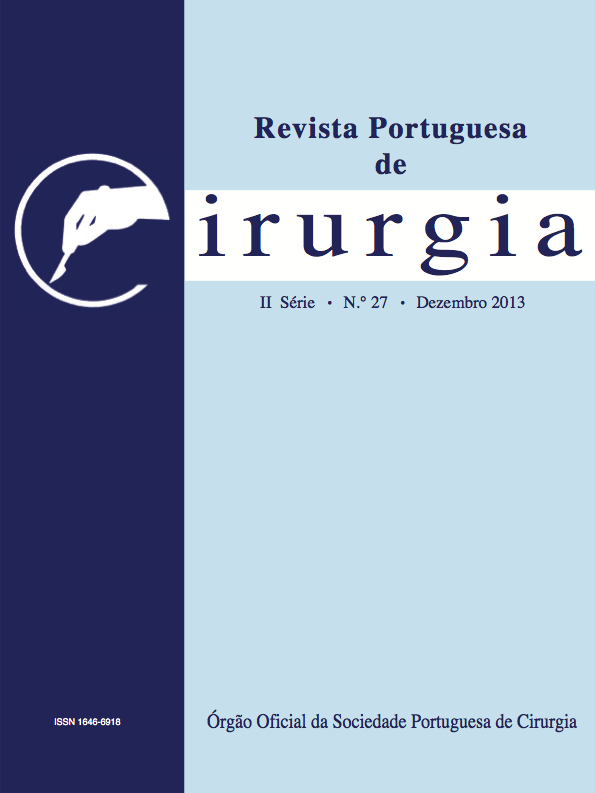Idiopathic bowel intussusception in adults: case report
Abstract
Introduction: Intussusception in adults is a rare entity, representing only 5% of all cases of intussusception. It represents 1% of all cases of intestinal obstruction, and in adults normally have an underlying organic cause (11-91% of cases). However, 8-21% of cases are idiopathic.
Clinical case: Patient, 19 years, history of prostatectomy, inguinal hernia repair, hydrocele correction and bilateral hip prothesis, referred to emergency department to partial obstruction, with 48 hours of evolution, admitted for conservative treatment. On second day, the patient presents worsening abdominal pain, and made TC: “distended loops of small bowel, sausage image in the right inferior abdominal region compatible with ileocecal intussusception.” Submitted to right hemicoletomy complicated by surgicall site infection. Discharged after 28 days. Histopathologycal examination revealed “areas of transmural ischemic necrosis and inflammation, compatible with ileocecal intussusception without dysplasia or malignant lesions.” No further complications at follow-up at first 3 months.
Discussion / Conclusion: The intussusception in adults is a rare cause of abdominal pain that should be considered in the differential diagnosis of partial or complete intestinal obstruction. The authors reported a case of ileocecal intussusception without underlying organic cause, which emphasizes the role of CT as a method of choice in diagnostic imaging of intussusception in adults.
Keywords: intussusception, ileocecal intussusception, intestinal obstruction, diagnosis, treatment.
Downloads
References
Renzulli P, Candinas D. Idiopathic small-bowel intussusceptions in an adult. CMAJ. 2111;182(3):E148
Wang N, Cui XY, Liu Y, Long J, Xu YH, Guo RX, Guo KJ. Adult intussusception: a retrospective review of 41 cases. World J Gastroenterol. 2119 Jul 14;15(26):3313-8.
Erkan N, Haciyanli M, Yildirim M, Sayhan H, Vardar E, Polat AF. Intussusception in adults: an unusual and challenging condition for
surgeons. Int J Colorectal Dis 2115; 21: 452-456
Gupta RK, Agrawal CS, Yadav R, Bajracharya A, Sah PL. Intussusception in adults: institutional review. Int J Surg. 2111;9(1):91-5
Kim YH, Blake MA, Harisinghani MG, Archer-Arroyo K, Hahn PF, Pitman MB, Mueller PR. Adult intestinal intussusception: CT appea-
rances and identification of a causative lead point. Radiographics 2116; 26: 133-144
Downloads
Published
Issue
Section
License
Para permitir ao editor a disseminação do trabalho do(s) autor(es) na sua máxima extensão, o(s) autor(es) deverá(ão) assinar uma Declaração de Cedência dos Direitos de Propriedade (Copyright). O acordo de transferência, (Transfer Agreement), transfere a propriedade do artigo do(s) autor(es) para a Sociedade Portuguesa de Cirurgia.
Se o artigo contiver extractos (incluindo ilustrações) de, ou for baseado no todo ou em parte em outros trabalhos com copyright (incluindo, para evitar dúvidas, material de fontes online ou de intranet), o(s) autor(es) tem(êm) de obter, dos proprietários dos respectivos copyrights, autorização escrita para reprodução desses extractos do(s) artigo(s) em todos os territórios e edições e em todos os meios de expressão e línguas. Todas os formulários de autorização devem ser fornecidos aos editores quando da entrega do artigo.



